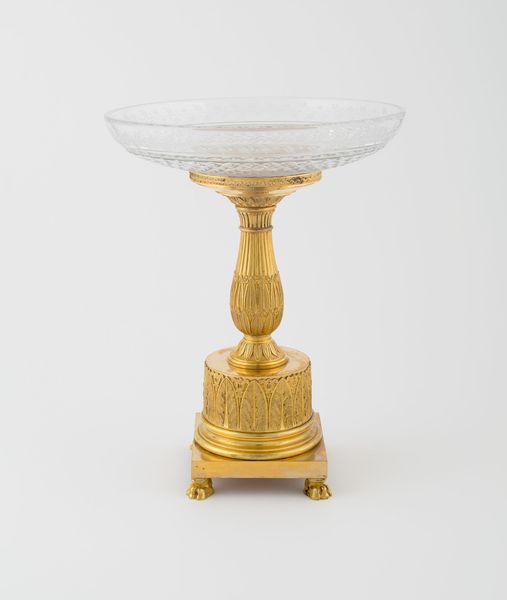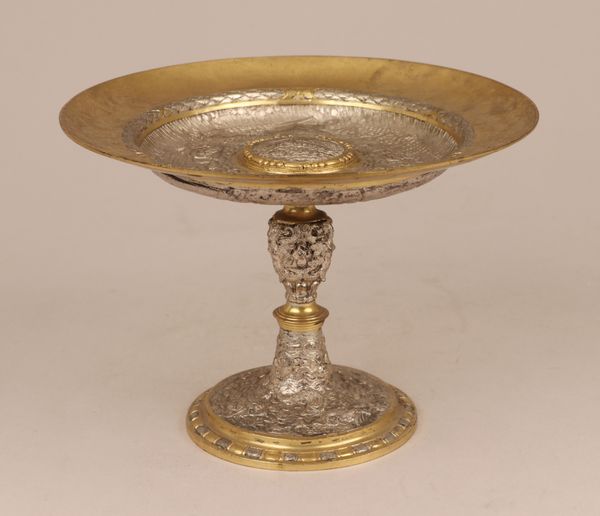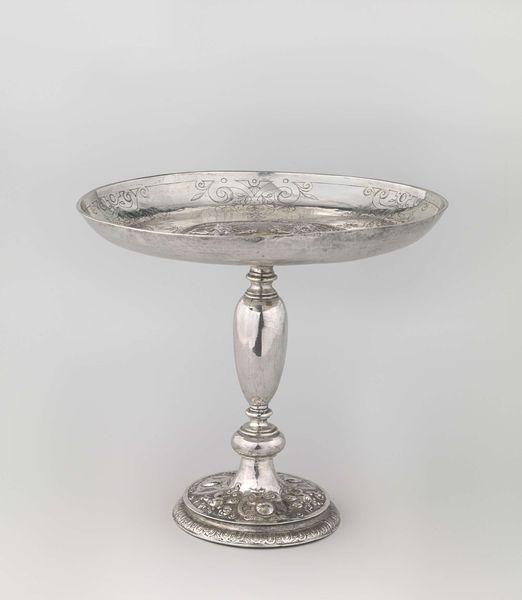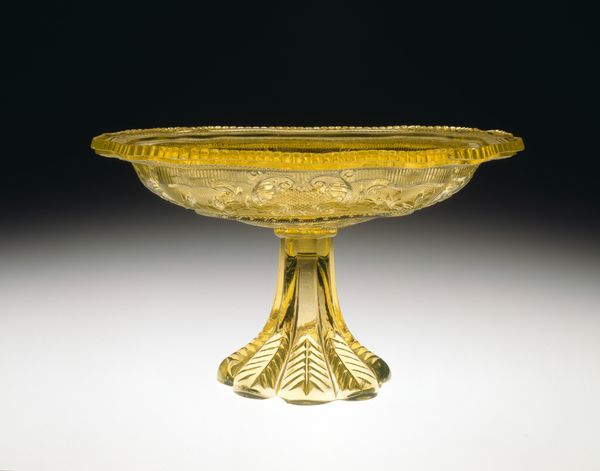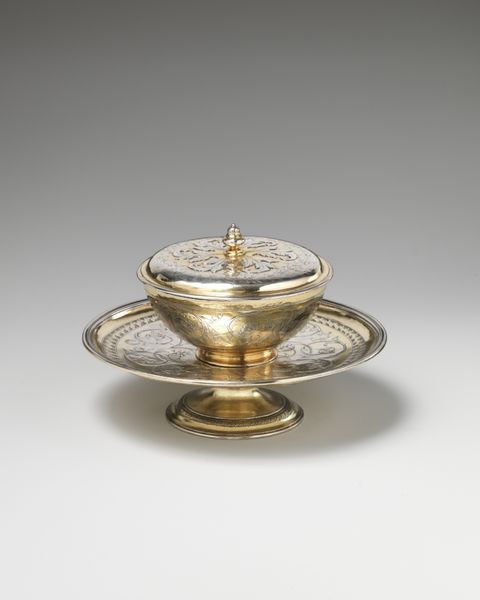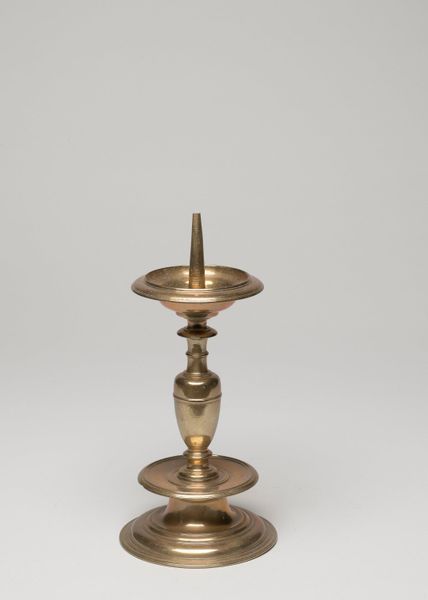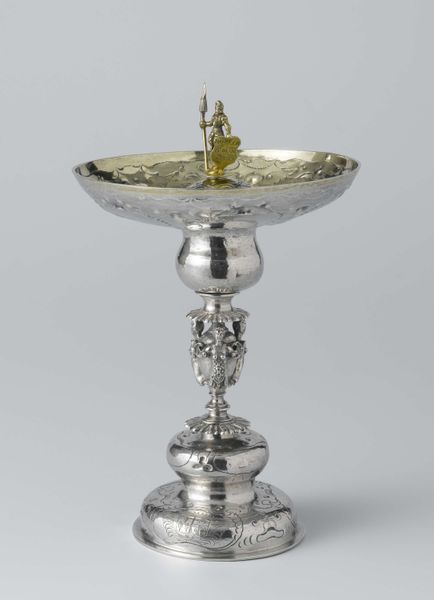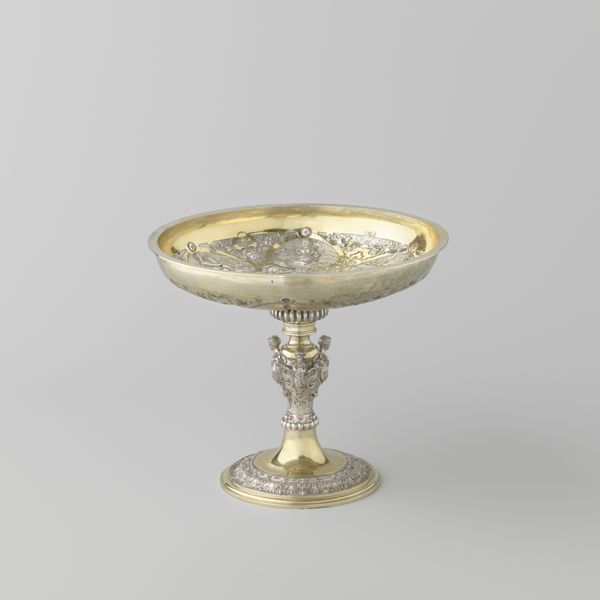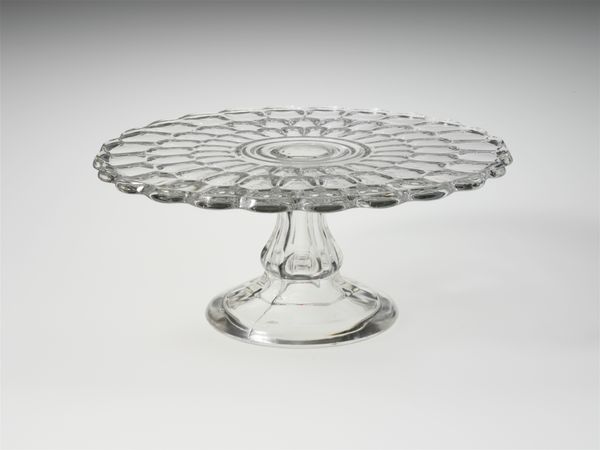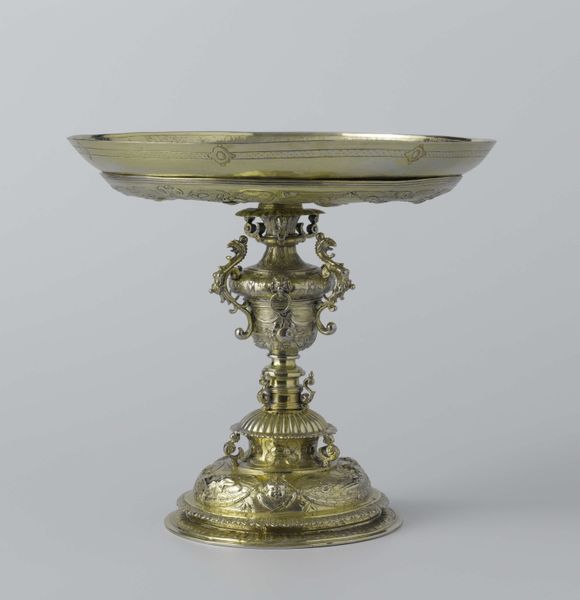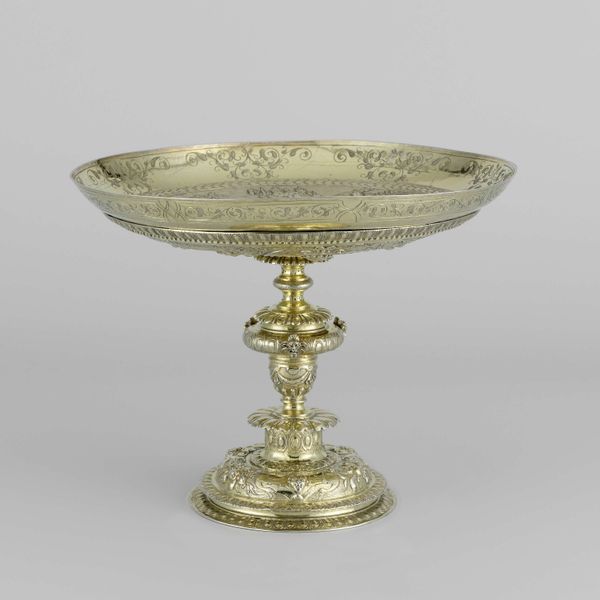
brass, silver, metal
#
neoclacissism
#
brass
#
silver
#
metal
#
ceramic
#
decorative-art
Dimensions: H. 20.3 cm (8 in.)
Copyright: Public Domain
Curator: This striking work is known as "Two Tazzas", created around 1820, and attributed to Pietro Paola Spagna. The piece, currently housed here at the Art Institute of Chicago, primarily employs brass and silver. It definitely brings Neoclassical decorative-art to life! Editor: Well, the first thing that strikes me is how unassuming they appear at first glance; the silver and brass create a reserved, almost modest gleam despite the elaborate decorative elements. It looks like they may need polishing... Curator: Absolutely. Think about the artisans and the social context they were functioning in: silver and brass weren’t simply commodities. They spoke to a very particular class of consumer and reflected status through their sheer cost, plus the labor that went into shaping them into these objects. Editor: True, these tazzas likely graced the tables of wealthy individuals. It is intriguing how objects like these become signifiers of cultural and economic power through exhibition and use. How do you imagine this was received at the time versus its display in the museum? Curator: I think their Neoclassical form made these objects an emblem of taste and sophistication in the early 19th century. It shows the fascination with antiquity then prevalent across Europe and reflects in its imagery of acanthus leaves and simple shapes. Editor: Considering how they would have been placed within a home compared to a gallery...it completely shifts our understanding of use and value. What’s truly remarkable to me is thinking of the labor – the molding, hammering, etching – processes nearly lost to time! It prompts a real respect for the materials. Curator: It certainly does. The contrast of tarnished metal against bright metal really showcases its use throughout history. It has patinas to give us clues. Editor: Examining it closer now, the simplicity, almost austerity, feels intentional, like a direct pushback to over-the-top opulence. Curator: Definitely. Looking at these objects today we can really imagine how metal objects acted to define status, production means and artistic design over a century ago. Editor: Yes, I've never given such thought to silverware and the hands that crafted them. It’s an important element of the artwork’s biography.
Comments
No comments
Be the first to comment and join the conversation on the ultimate creative platform.
